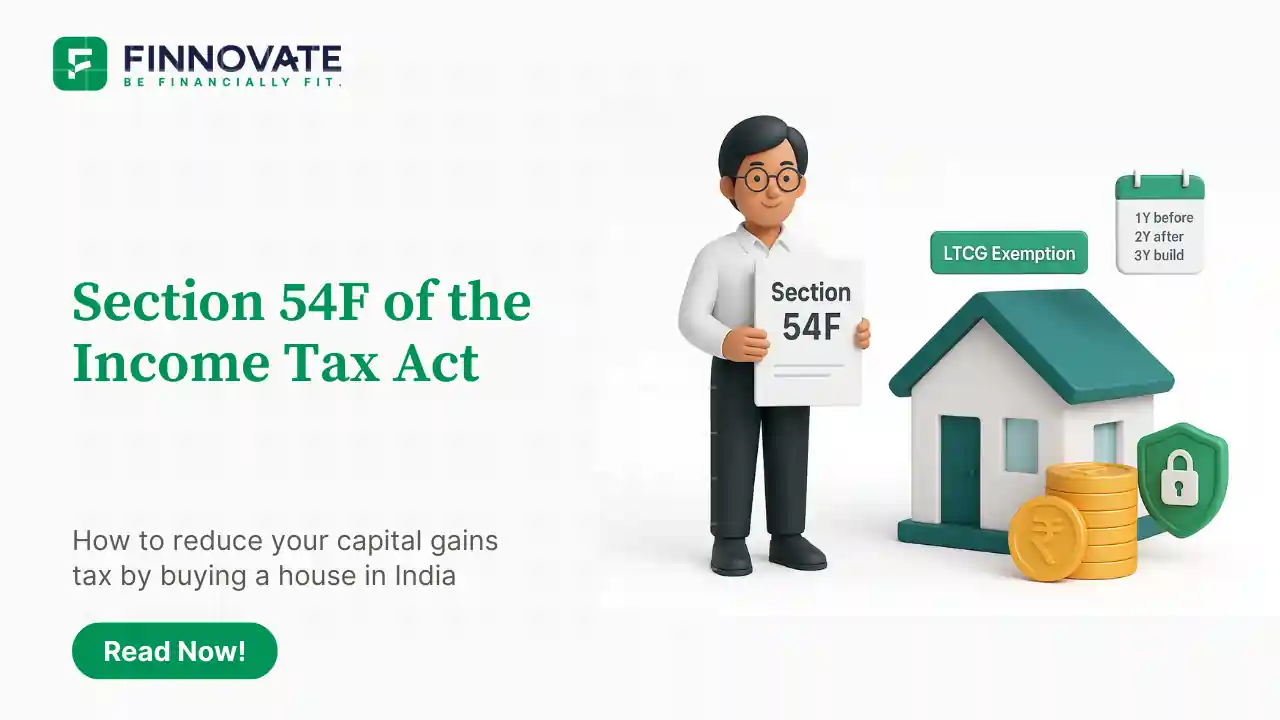
Section 54F Exemption: Save LTCG Tax by Buying a House in India
Learn how Section 54F works to reduce long-term capital gains tax when you reinvest sale p...
In India, tax-saving is not just about investments - it's also about smart structures. One such legal and family-based structure is the Hindu Undivided Family (HUF). You may have heard this term from your CA, seen it on your income tax portal, or come across it in financial articles.
But what exactly is an HUF? How does it work? Who can create one? Can it actually help you save tax?
Let’s break it down in simple terms.
Want to hear directly from professionals?
In this in-depth webinar, Finnovate's Founder Nehal Mota and Chartered Accountant Jayant Furia break down:
HUF stands for Hindu Undivided Family. It is a legal entity recognized under Indian law that consists of all persons lineally descended from a common ancestor - including their wives and unmarried daughters.
This means a family can file a second income tax return (in addition to the individual return) - helping them 'legally save taxes' and manage inherited or joint family wealth more efficiently
To form an HUF, you must belong to one of the following eligible categories:
Note: HUF cannot be formed by Muslims, Christians, Parsis, or by individuals on their own.
Yes, Non-Resident Indians (NRIs) who belong to eligible religions can maintain an HUF in India, particularly to manage ancestral property or Indian-sourced income. However, this must be done with careful legal and tax compliance under Indian law.
There are two terms to know:
1. Coparceners (Have the right to demand partition and share in property)
2. Members
Karta: The senior-most male/female coparcener who manages the HUF.
Let’s say Mr. Sharma owns a business. He creates an HUF and assigns rental income from ancestral property to it. The HUF files its own income tax return and gets the benefit of separate tax exemption slabs.
At the same time, Mr. Sharma continues filing his own personal income tax return.
Result? The family saves more taxes because income is split between two entities.
Once set up, your HUF is treated like a separate person under the tax law.
| Benefit | Description |
|---|---|
| Separate Exemption Slab | ₹2.5 lakh exemption (same as individual) |
| Eligible for Deductions | Under Sections 80C (investments), 80D (health insurance), etc. |
| Can Invest & Own Property | In real estate, stocks, mutual funds, or insurance |
| Ideal for Joint Income Management | Ancestral rent, gifts, agricultural income, business profits |
1. Prepare a formal HUF Deed in a stamp paper
2. Apply for separate a PAN card in the name of the HUF via NSDL or UTIITSL Website
3. Open a separate bank account in the name of HUF
4. Assign assets or income
Note: You cannot transfer salary income to an HUF.
Yes!
This makes HUF a more inclusive tool in modern financial planning.
| Term | Meaning |
|---|---|
| HUF | Hindu Undivided Family - legal tax entity |
| Karta | Manager of the HUF, usually eldest coparcener |
| Coparcener | Family member with legal share in property |
| Member | Family member without right to demand partition |
| Partition | Division of HUF assets |
| HUF Deed | Legal document declaring formation of HUF |
At Finnovate, we believe structures like HUF can help Indian families build long-term wealth while staying compliant with the law. Understanding how HUF works is not just about saving tax - it's about learning how to manage your money as a family unit.
We don’t recommend products, but we do help you ask the right questions.
Want to know how an HUF fits into your family’s finances?
Book a Free ConsultationNo. Salary income is considered personal and cannot be assigned to an HUF for tax purposes.
A woman cannot form a new HUF alone, but she can be a coparcener, member, or even a Karta if eligible within the family.
Gifts from relatives are exempt. Gifts from others are exempt up to ₹50,000 in a year; beyond that, they’re taxable.
Yes. HUFs can invest in a wide range of instruments including stocks, mutual funds, real estate, etc., under its PAN.
Yes. Through a legal partition, all assets are distributed and the HUF ceases to exist.
Disclaimer: This content is for educational purposes only. Finnovate does not recommend any specific stocks, funds, or financial instruments.
Popular now

Learn how to easily download your NSDL CAS Statement in PDF format with our step-by-step g...

Explore what Specialised Investment Funds (SIFs) are, their benefits, taxation, minimum in...

Learn How to Download Your CDSL CAS Statement with our step-by-step guide. Easy instructio...

Analyzing the potential economic impact of the 2025 India-Pakistan conflict on India's GDP...